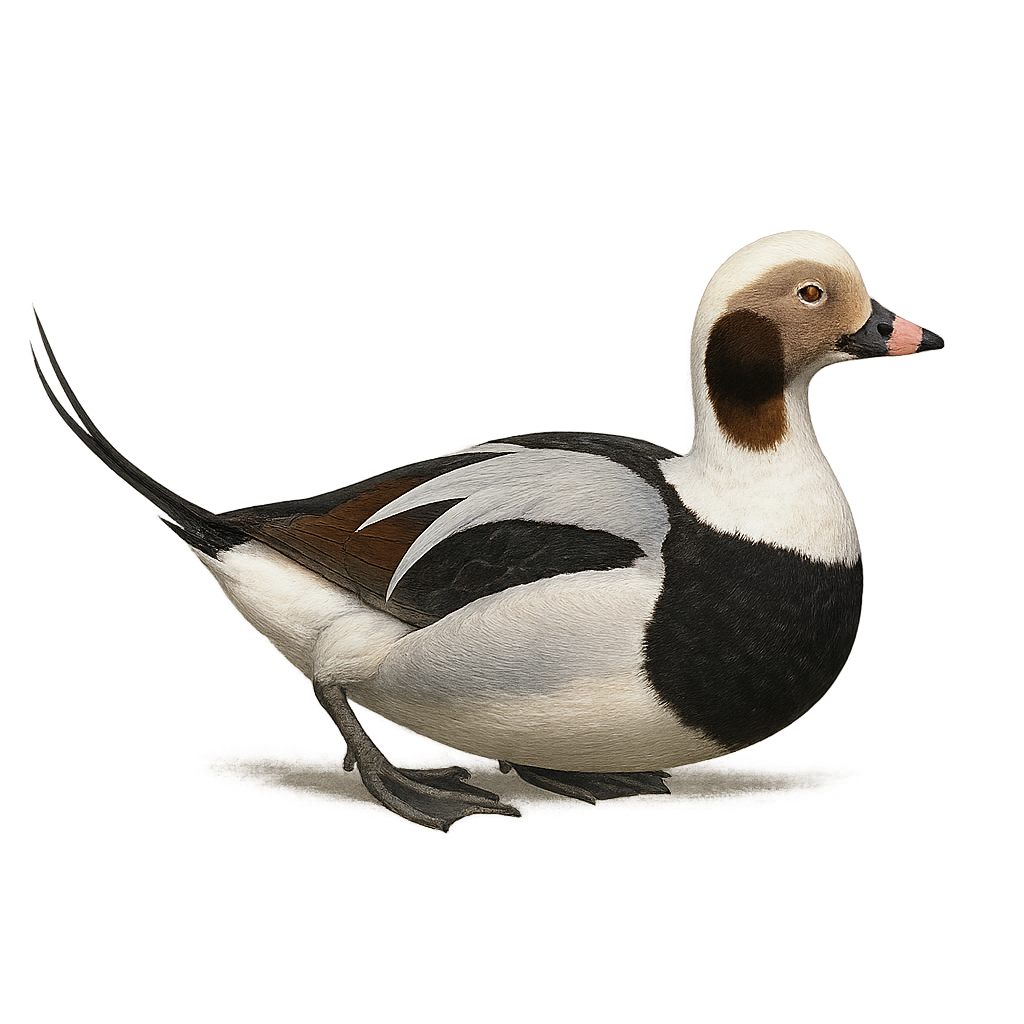Observe and photograph a species in its natural habitat
Learn where and when to observe a species in the wild, how to recognize it in the field, and what habitats it lives in. Get photography tips adapted to its behavior and capture stunning images without disturbing the animal. For full details, open the complete profile in the WildlifePhotographer app.
Long-tailed duck
Scientific name: Clangula hyemalis

IUCN Status: Least Concern
Family: ANATIDAE
Group: Birds
Shyness: Suspicious
Safe distance: 30 m
Breeding season / Courtship: 01.05-30.06
Gestation: N/A
Births: 01.06-31.07
Habitat:
Coastal shores, cold waters of the Arctic and North Atlantic, particularly around Scandinavia and Canada
Description:
The Common Eider is a medium-sized seabird, easily recognizable by its distinctive plumage and diving behavior. It measures about 40 cm in length, with a wingspan of 65 to 75 cm, and weighs between 500 and 900 g. Its plumage is primarily black and white, with a black head, a wide white band around the neck, and white spots on the wings. The male, during the breeding season, has a bright orange beak and a distinctive white line running from the beak to the back of the head. The Common Eider primarily inhabits the cold waters of the North Atlantic, notably around the coasts of Iceland, Greenland, Canada, and Northern Europe. It is an excellent diver, feeding mainly on small fish, crustaceans, and marine invertebrates, which it captures underwater. The Common Eider migrates southward during the winter. Although the species is not currently endangered, it is vulnerable to marine pollution, climate change, and disturbance of its breeding sites.
Recommended lens:
>=300 mm
Photography tips:
To photograph the long-tailed duck, a telephoto lens is ideal for capturing its movements on water or when in flight.
Take photos early in the morning or late in the day to benefit from soft light and better photography conditions.
Be discreet and respect the safety distance to avoid disturbing its natural environment, especially during the breeding season. Observation should be done respectfully, so as not to interfere with its natural behaviors and habitat.
Ready to take action?
Choose your platform and start your free trial today



